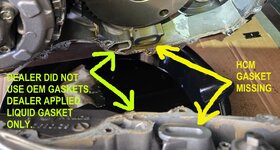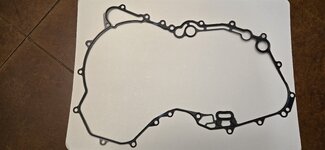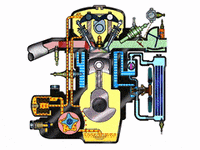I solved my no oil visible on dip stick issue.
I discovered that the previous owner had taken my Spyder to his local dealer for warranty work not long before he sold the bike to me. When pressed, he admitted that he had also encountered the no oil visible on dip stick issue but only after that warranty work was done. Before the warranty work, he said he could always see oil on the dipstick.
The warranty work required the dealer to remove the clutch cover. I consulted the Can-Am service manual, and it said one possible cause of the no oil visible on dipstick issue could be a missing HCM gasket inside the clutch cover. I decided to remove the clutch cover myself to see if the HCM gasket was missing, and it was!
I discovered that the dealer did not install the metal OEM clutch cover gasket nor the small rectangular rubber HCM gasket that comes with the gasket kit. The dealer instead just used liquid gasket around the outer periphery of the clutch cover. The dealer made no attempt at sealing the interface where the HCM gasket goes. I installed a new OEM clutch cover gasket and HCM gasket. I now can see oil on my dipstick. Problem solved!
I've attached a photo of what I found when I removed the clutch cover and a photo of the new OEM gasket and HCM gasket kit I installed.
View attachment 212322 -
View attachment 212323



